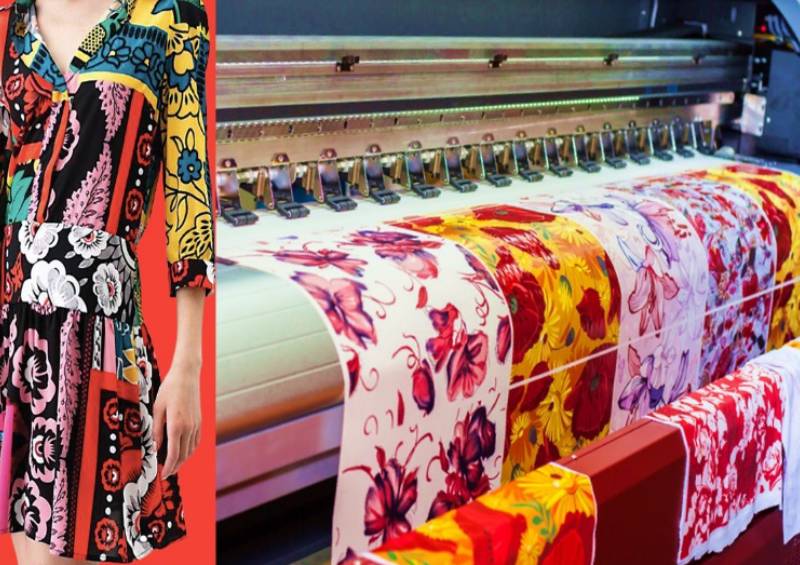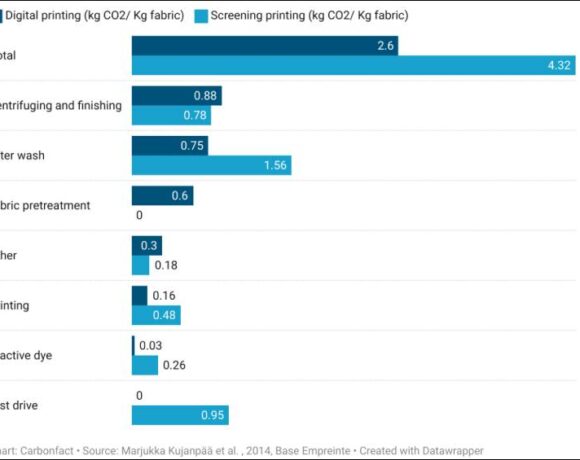India’s Digital Textile Printing Market To Grow 13% CAGR Between 2023-2033

The digital textile printing market is experiencing robust growth globally, with India being a key player in the Asia-Pacific region. The Indian digital printing market is expected to grow at a substantial CAGR of 13% between 2023 and 2033, fueled by the robust performance of the textile sector and the presence of well-established textile mill clusters in the region.
India has over 1,000 digital fabric printing services in operation, with expectations of a considerable increase during the forecast period. The adoption of dye-sublimation digital printing on polyester fabric, with its high printing speeds of 15,000 to 20,000 sq/m, is a significant driver for market expansion. Factors such as cost-effectiveness, durability and rapid printing speeds position digital textile printing as a prominent player in India’s dynamic textile industry over the next decade.
The presence of a tech-savvy generation in India, along with significant players at the forefront of technological advancements, contributes to the industry’s growth and competitiveness. Digital textile printing offers benefits such as customization, cost-efficiency and environmental sustainability, making it a preferred choice in the evolving market landscape.
In North America, the market is well-positioned to harness opportunities for innovation and progress within the digital textile printing sector. Companies in the industry are focusing on technological advancements, investing in research and development, and diversifying their product portfolios to gain a competitive edge. North America accounts for 13.2% of the total market share in the digital textile printing industry, driven by the presence of digital natives and key players in the region. China is also a significant contributor to market growth, with a projected CAGR of 13.8%.
While the market is thriving, challenges include the high cost of digital textile printing machines compared to traditional methods. The adoption of single-pass printing for higher quality adds to the cost and skilled operators are needed to achieve desired outcomes. Manufacturers are working to reduce the cost of ink and pigments to alleviate this restraint.
The direct to fabric (DTF) printing process is the leading driver of market growth, accounting for 45.6% of the market share, followed by direct to garment printing at 33.9% and dye sublimation printing at 12.1%. In the global digital textile printing market, the fashion industry holds a commanding share of 43.4%. Digital textile printing has become a game-changer in the fashion industry, enabling faster production, customization and unique design capabilities, while reducing inventory costs and facilitating a faster response to fashion trends.
The competitive landscape of the digital textile printing market is intensifying, with new vendors entering the market due to increased demand for printed textiles and consistent profitability. Key players in the market, including Kornit Digital, Seiko Epson Corporation, Mimaki Engineering and Durst Group, are focusing on new product releases and forming partnerships to meet the growing demand for environment-friendly products.
In October 2021, Roland DG Corporation launched D-BRIDGE, a support website providing valuable information about the benefits of digitalization for those involved in creating, especially in printing or manufacturing. In May 2021, ASOS and Fashion-Enter Ltd. collaborated with Kornit to implement Kornit Presto, a low-impact direct-to-fabric digital textile printing solution, showcasing the industry’s commitment to sustainability and advanced printing technologies.















